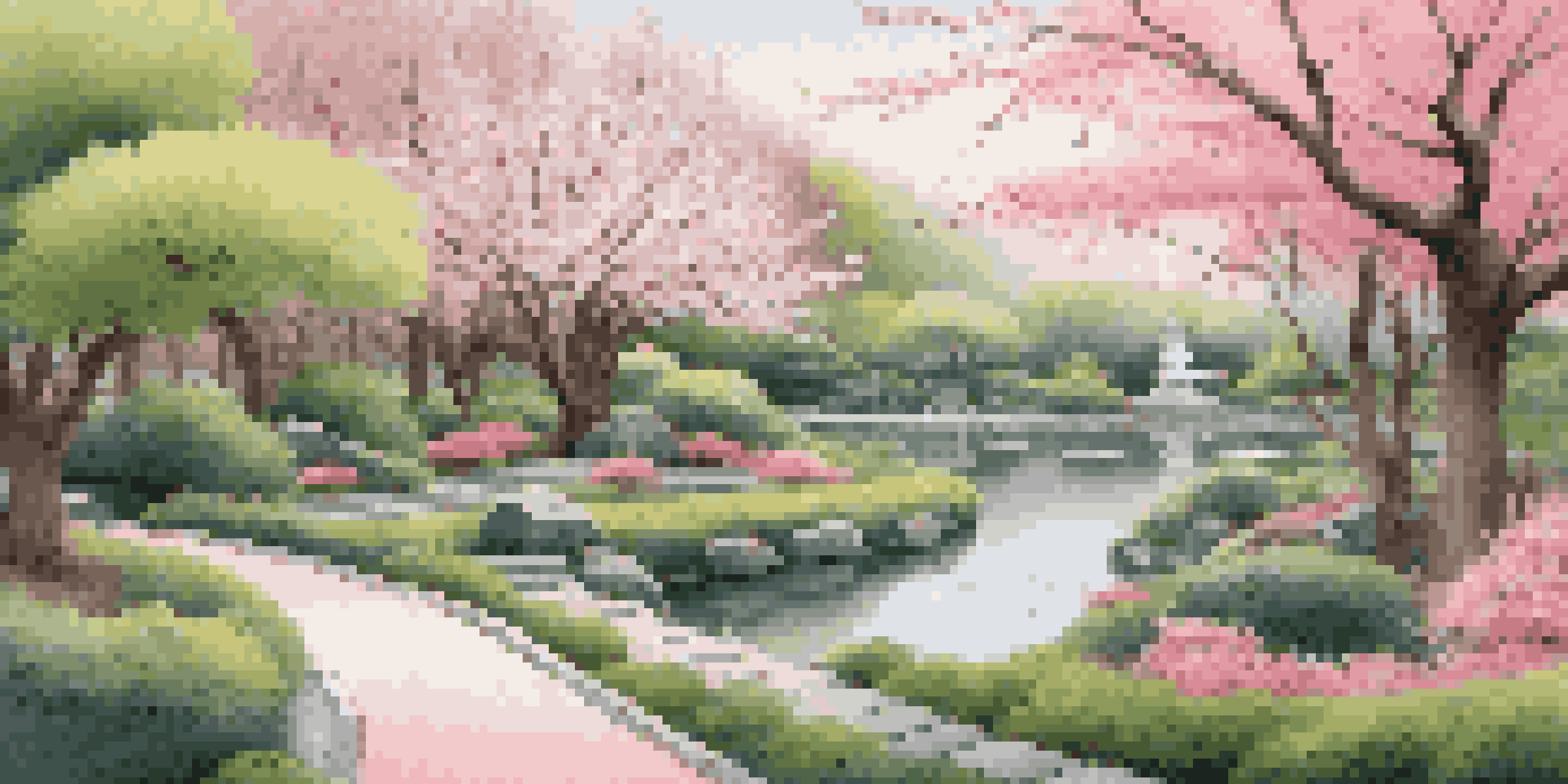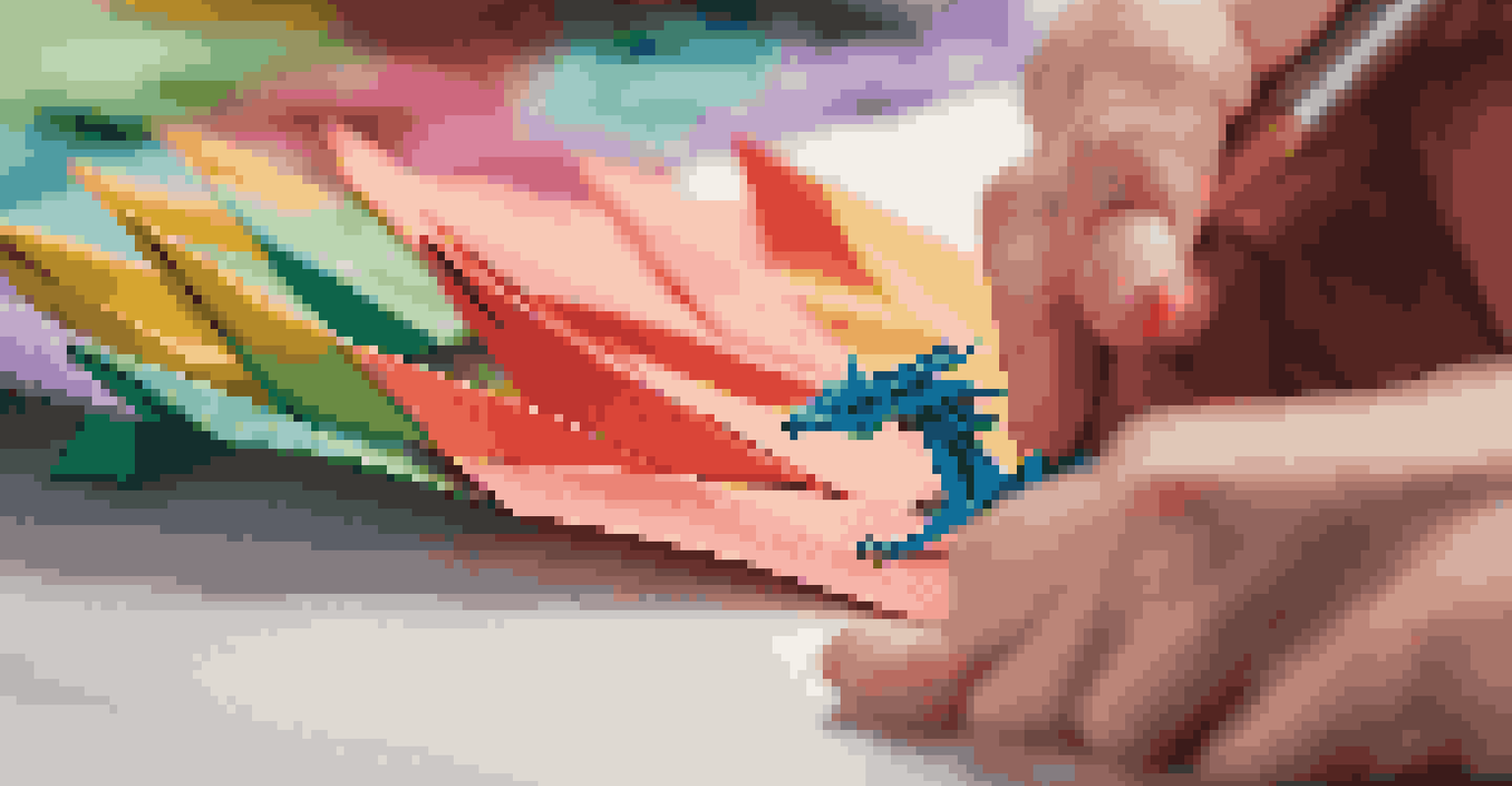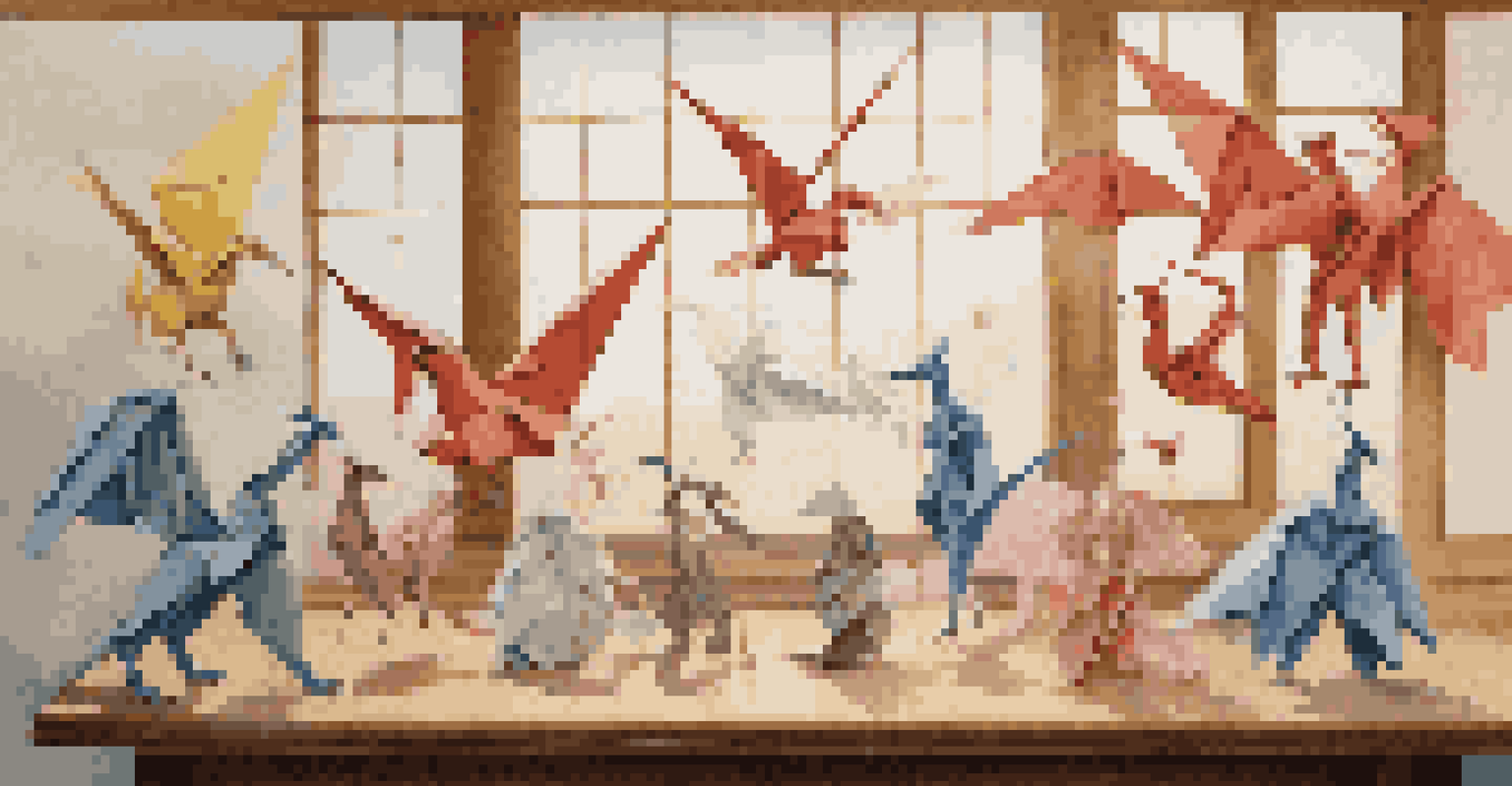Famous Origami Projects: Iconic Models and Their Creators

The Art of Origami: A Brief Introduction
Origami, the ancient art of paper folding, has evolved from simple childhood crafts to a sophisticated form of artistic expression. This practice combines creativity with engineering, transforming flat sheets of paper into intricate sculptures. The beauty of origami lies not just in the final product, but in the process of folding, which requires patience and precision.
Origami is a wonderful way to express creativity and to discover the beauty of mathematics.
As we delve into the world of origami, it’s essential to recognize its cultural significance across various societies. Originating in Japan, this art form has spread globally, inspiring artists and hobbyists alike. Today, origami is not just seen as a pastime but also as a medium for scientific research and innovation, particularly in fields like robotics and architecture.
In this article, we will explore some of the most famous origami projects and the brilliant minds behind them. Each model tells a story of creativity, innovation, and the deep connection between art and mathematics, showcasing how a simple piece of paper can inspire awe and admiration.
The Classic Crane: A Symbol of Peace
Perhaps the most iconic origami model is the crane, often associated with peace and hope. According to Japanese tradition, folding a thousand cranes grants the folder a wish, which is why this model holds a special place in many hearts. The crane's simple yet elegant design can be a beautiful reminder of resilience and the pursuit of dreams.

The story of Sadako Sasaki, a young girl who folded paper cranes while battling leukemia after the Hiroshima bombing, further popularized this symbol. Her legacy inspired a global movement to promote peace, making the crane not just an art piece, but a powerful symbol of healing and hope. This narrative reminds us how art can transcend its medium and touch lives in profound ways.
Origami: Art Meets Science
Origami blends creativity and mathematics, leading to innovative applications in fields like robotics and architecture.
Many artists have contributed their unique spins on the classic crane, each adding new techniques or styles. These variations showcase the crane's versatility, proving that even a simple design can evolve and inspire, reflecting the diverse perspectives of its creators.
Robert Lang: The Master of Mathematical Origami
Robert Lang stands out as one of the most influential origami artists, known for his intricate designs that blend art with mathematics. With a background in applied mathematics, Lang has transformed origami into a scientific discipline, creating models that push the boundaries of what can be achieved with paper. His work exemplifies how creativity and analytical thinking can intertwine harmoniously.
The beauty of origami is that it can be both an art and a science, a way to explore the world around us.
One of Lang's most famous models is the 'Flying Dragon,' which showcases his ability to create complex, three-dimensional forms. This model, with its detailed structure and lifelike appearance, illustrates the meticulous planning that goes into each fold. Lang’s contributions to origami have not only advanced the art form but also inspired countless enthusiasts to explore its mathematical foundations.
Through his teachings and published works, Lang has helped demystify the complex relationships between folding techniques and geometric principles. His influence continues to resonate in the origami community, encouraging both artists and mathematicians to collaborate and innovate.
Tomoko Fuse: The Queen of Modular Origami
Tomoko Fuse is celebrated for her mastery of modular origami, a technique where multiple pieces of paper are folded and assembled to create complex structures. Her unique approach emphasizes the beauty of geometric forms and the harmony of repeated units. Through her work, Fuse has shown that origami can be both an individual and collective art form.
One of her most notable contributions is the creation of intricate geometric shapes, such as polyhedra, that challenge traditional notions of flat paper. Fuse's models often require precision and the ability to visualize how multiple units fit together, making her work a delightful puzzle for origami enthusiasts. Each creation not only showcases her artistic vision but also her deep understanding of geometry.
Symbolism of the Crane
The crane, representing peace and hope, embodies a powerful narrative of resilience through stories like that of Sadako Sasaki.
In addition to her designs, Fuse has authored several books that provide insights into her techniques, making her work accessible to a wider audience. Her passion for teaching and sharing knowledge has inspired many to explore the world of modular origami, further enriching the community.
Jo Nakashima: Innovator of Modern Origami
Jo Nakashima is a contemporary origami artist who has gained recognition for his innovative designs and engaging video tutorials. His work often combines traditional folding techniques with modern aesthetics, appealing to both seasoned folders and newcomers alike. Nakashima's approach emphasizes accessibility, making origami enjoyable and approachable for everyone.
One of his standout models is the 'Origami Dragon,' which showcases his talent for creating dynamic and intricate designs. Through his step-by-step tutorials, Nakashima demystifies complex folds, allowing people to experience the joy of origami firsthand. His passion for teaching has helped foster a strong online community of origami enthusiasts eager to learn and share.
Nakashima's contributions extend beyond just designs; his commitment to promoting origami as a form of art and expression has inspired many. By blending creativity with technology, he has opened up new avenues for the origami community, proving that the art form can continually evolve and adapt.
Eric Joisel: The Master of Origami Characters
Eric Joisel is renowned for his extraordinary ability to create lifelike characters from paper. His work stands out for its incredible detail and emotional expression, transforming simple paper into captivating three-dimensional figures. Joisel's artistry highlights the potential of origami as a storytelling medium, where each fold contributes to a character's personality.
One of his most beloved creations is the 'Dragon,' which showcases intricate detailing and a dynamic pose. This model exemplifies how Joisel combined artistry with technical skill to breathe life into paper. His characters often evoke emotions, drawing viewers into their stories and inviting them to explore their narratives.
Influential Origami Artists
Artists like Robert Lang and Tomoko Fuse have elevated origami, merging intricate designs with mathematical principles and modular techniques.
Beyond his designs, Joisel was also a passionate teacher, sharing his techniques and philosophy with others. His legacy continues to inspire new generations of origami artists to explore the emotional depth and storytelling potential of their creations.
Origami in Science: Practical Applications
While origami is often appreciated for its artistic flair, it has also found significant applications in science and technology. Researchers are exploring how origami principles can be applied in various fields, from space exploration to medical devices. This intersection of art and science highlights the versatility of origami beyond mere aesthetics.
For instance, NASA has utilized origami techniques to develop deployable structures for space missions. By folding materials in innovative ways, scientists can create compact structures that expand once deployed, maximizing efficiency and functionality. This practical application demonstrates how the principles of origami can lead to groundbreaking innovations.

Similarly, in the medical field, origami-inspired designs are being used to create stents and other devices that can navigate complex pathways within the human body. These advancements underscore the impact of origami on real-world challenges, showcasing how a seemingly simple art form can lead to transformative solutions across various industries.